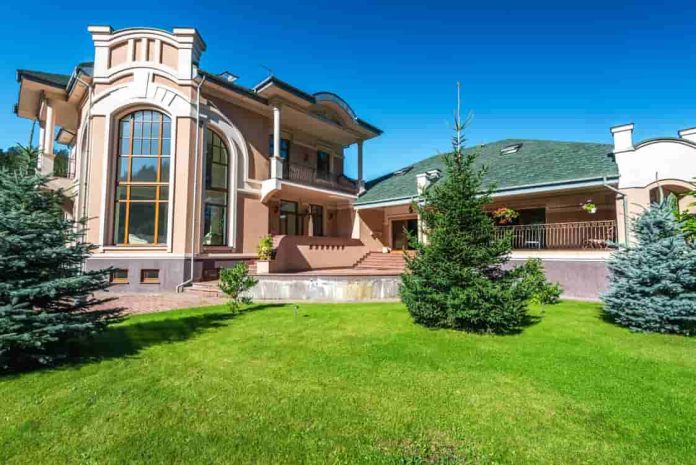Most homeowners spend time focusing on the inside of their home. But the outside often gets left behind or stays stuck in whatever look it had when the house was first built. The result is a home that feels pulled in two directions. If the interior feels fresh, updated, and carefully designed, there’s no reason the outside shouldn’t show that same kind of thought.
Bringing the outside up to speed doesn’t have to be a massive project. It’s often about small upgrades that create a more natural connection between what you see when you walk through the front door and what you pass on your way in. Whether it’s a material swap, a design update, or just aligning the tone of your spaces, rethinking your exterior can make the whole house feel complete.
Update Siding
If your home still has the original siding or if it just doesn’t match the feel of the space inside—it might be time to look at an upgrade. Siding takes up most of your home’s visual space from the outside, so when it feels outdated or worn down, the whole exterior can start to look disconnected. Choosing new siding that goes well with the tone and material style of your interiors makes the outside feel like part of the same story.
Working with a local siding company is a smart move for this kind of project. They understand what materials hold up well in your area, and they’re often better equipped to match your vision than a one-size-fits-all solution. Whether your interior leans warm and rustic or cool and clean, you can find a siding style that lines up with what’s happening inside your home.
Match Entry Vibe
Your front entry sets the first impression. If it feels cold or outdated, it won’t match the comfort or style you’ve created inside. Something as simple as a new front door color, different hardware, or upgraded lighting can bring the outdoor entry in line with what someone would expect once they step inside.
Think about how your home feels when you walk in. Is it calm and minimal? Warm and welcoming? Clean and modern? Whatever the answer is, your entry should match that tone.
Coordinate Mailbox Style
Most people overlook the mailbox, but it’s one of the first things someone sees. If your interior has a clear design vibe, whether it’s sleek, industrial, cozy, or classic, it helps when exterior details like the mailbox don’t clash with it. A plastic, fading mailbox might not hold up next to a freshly renovated home with updated finishes.
Swapping it for something in a finish or color that reflects your indoor materials, like black matte metal, brushed stainless, or even natural wood, can bring small but meaningful cohesion.
Align Pathways with Flow
The layout of your home probably follows a pattern that makes sense to you—maybe you walk in and head straight to the kitchen, or maybe your home naturally flows from room to room. That same sense of flow can be applied to your outdoor spaces, especially when it comes to garden paths or walkways.
If your current path takes you on a roundabout route or cuts awkwardly across the lawn, it might not reflect the ease and logic of your interior space. Rethinking where paths begin, how wide they are, and how they guide people toward the door (or around the house) can help create a smoother experience that matches the comfort and layout already happening inside your home.
Echo Interior Textures
If your interior has standout features like wood accents, subtle paneling, or patterned walls, bringing similar textures outside can make your home feel more connected. It doesn’t have to be an exact match—just enough to create a link between the two spaces.
For example, if you have wood paneling inside, adding a wood-style detail to the exterior wall or porch trim can carry that feeling out. Stone walls, board and batten siding, or even a painted pattern on a gate can echo what’s happening indoors without feeling forced.
Bring Scents Outdoors
If you’ve created a relaxing indoor vibe with candles, diffusers, or houseplants, you can extend that same feeling to your patio, porch, or balcony with real plants and herbs. Not only do they add color and life, but they also carry the kind of scents that make outdoor time feel more intentional.
Basil, lavender, mint, and rosemary are easy to grow and smell great. Planting them in small pots outside your kitchen window or near your entryway connects the outdoors with the smells and greenery that might already be part of your indoor environment.
Reflect Living Room Style
Think about how you use your living room. Do you keep it laid-back and quiet? Is it more for hosting? Whatever the vibe, your backyard or patio can follow the same tone. If your indoor space is cozy, a few cushioned chairs and warm lighting outside can match that energy. If your living room is more social, maybe an outdoor table or fire pit fits better.
When indoor and outdoor spaces feel like they’re designed for the same kind of use, the transition between them feels smooth instead of disconnected.
Repeat Accent Materials
Small details inside, like metal finishes, matte surfaces, or warm-toned woods, can easily find a place outside, too. Using similar finishes in lighting fixtures, outdoor furniture, or railings can tie everything together visually.
For example, if you have matte black handles and light fixtures inside, choosing outdoor lanterns or address numbers in the same finish makes the exterior feel like an extension of what’s happening indoors.
Use Similar Architecture
Interior details like exposed beams, arches, or built-in textures often get attention inside, but they can also help shape the outside. Carrying over similar elements outdoors keeps things feeling intentional. It doesn’t have to be big. Sometimes, a matching trim detail or roofline change is enough.
If your living room has arched doorways, consider using similar curves on outdoor gates or overhangs. If your kitchen has strong, clean lines and open shelving, straight beams or simplified outdoor posts can reflect that look without overdoing it.
Choose Mood-Driven Colors
Colors set the tone inside your home, and they can do the same outside. If your interiors are calm and neutral, a soft exterior palette makes sense. If your inside space is warm and full of contrast, the outside doesn’t need to be shy about bold shades or darker trims.
Using colors that reflect how your home feels on the inside makes the whole property feel unified.
The outside of your home doesn’t have to feel like a separate world from the inside. With a focus on updating siding, syncing your layout, or repeating small design elements, you can create a smoother connection between the spaces. When the outside feels just as thought-out as the inside, your whole home works better as one complete picture.

